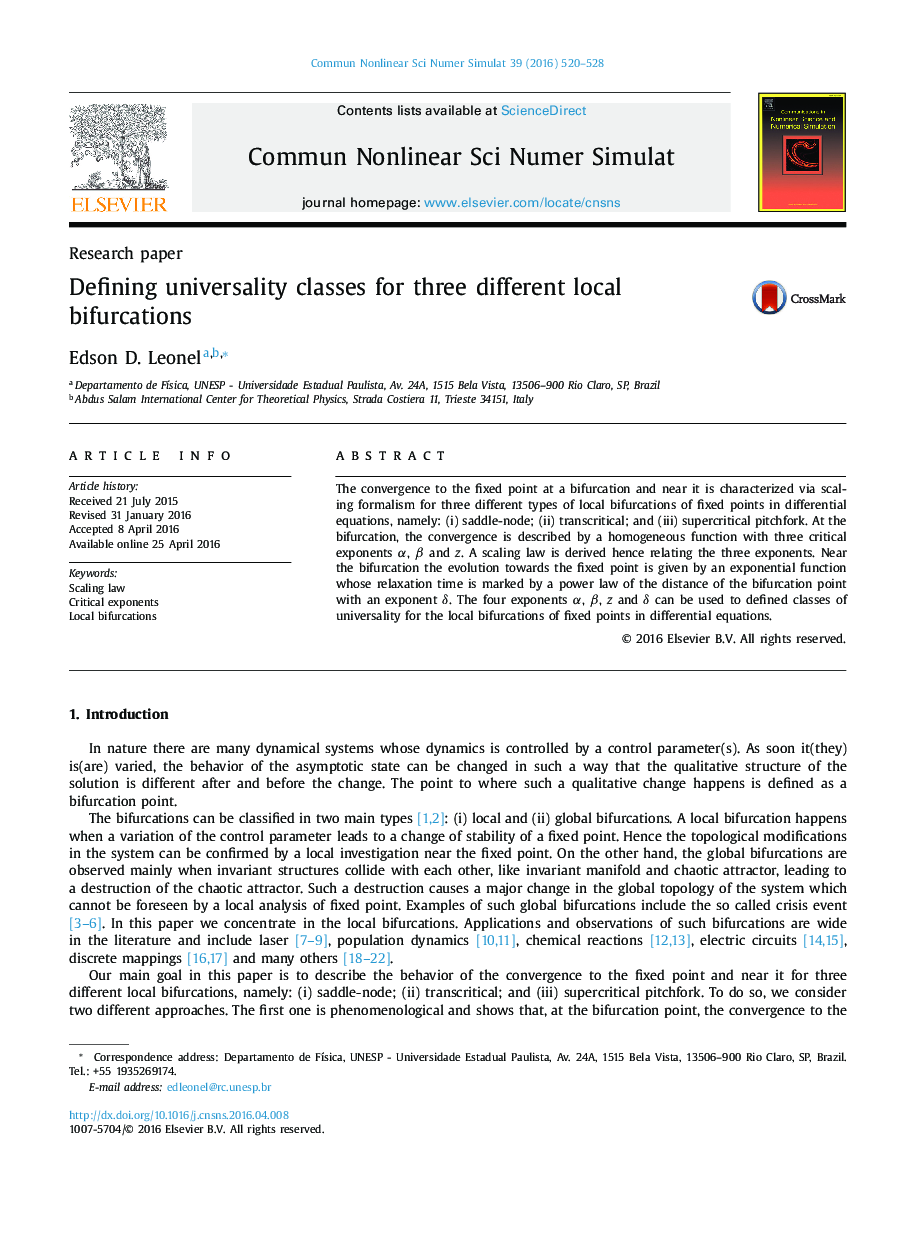| Article ID | Journal | Published Year | Pages | File Type |
|---|---|---|---|---|
| 7155175 | Communications in Nonlinear Science and Numerical Simulation | 2016 | 9 Pages |
Abstract
The convergence to the fixed point at a bifurcation and near it is characterized via scaling formalism for three different types of local bifurcations of fixed points in differential equations, namely: (i) saddle-node; (ii) transcritical; and (iii) supercritical pitchfork. At the bifurcation, the convergence is described by a homogeneous function with three critical exponents α, β and z. A scaling law is derived hence relating the three exponents. Near the bifurcation the evolution towards the fixed point is given by an exponential function whose relaxation time is marked by a power law of the distance of the bifurcation point with an exponent δ. The four exponents α, β, z and δ can be used to defined classes of universality for the local bifurcations of fixed points in differential equations.
Related Topics
Physical Sciences and Engineering
Engineering
Mechanical Engineering
Authors
Edson D. Leonel,
